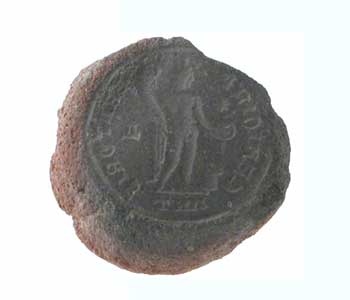Roman Counterfeiter's Coin Mold, 250 CE - 350 CE
Terracotta
1 x 1
PF.1605
This unusual artifact provides an important footnote to the history of numismatics. It is an ancient counterfeiter's mold, used to create coins in imitation of the Imperial issues. Since offical...
This unusual artifact provides an important footnote to the history of numismatics. It is an ancient counterfeiter's mold, used to create coins in imitation of the Imperial issues. Since offical coinage was minted by hand, there was considerable variation in the shape and appearance of coins. Therefore, forgery was less likely to be spotted for its inconsistencies. The mold was used to shape coins rather than to strike them with dies. The finished products were probably circulated in and around an army camp and adjoining towns where there was a quick exchange of money. Economic and political turmoil of the late 3rd and early 4th centuries provided a perfect environment for forgeries. This fascinating mold tells much about human nature, and adds an intriguing element to our impressions of antiquity.



